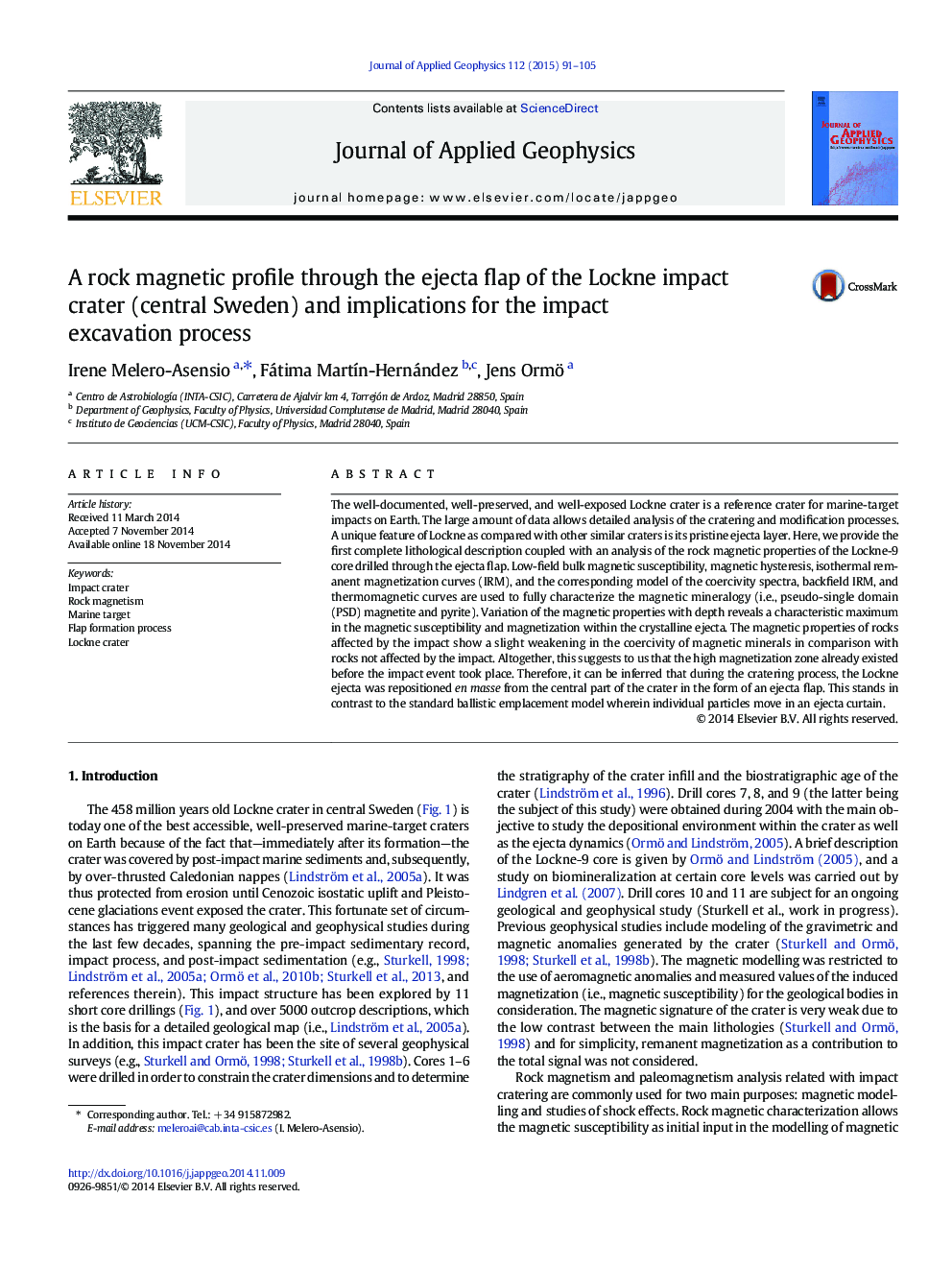| کد مقاله | کد نشریه | سال انتشار | مقاله انگلیسی | نسخه تمام متن |
|---|---|---|---|---|
| 4740001 | 1641139 | 2015 | 15 صفحه PDF | دانلود رایگان |

• Rock-magnetism reveals a high magnetization zone of pre-impact nature.
• Petrophysical characterization and description of the Lockne-9 core (central Sweden).
• Magnetic behavior is dominated by magnetite/titanomagnetite.
• Comparisons of affected and non-affected samples suggest a quick flap formation.
The well-documented, well-preserved, and well-exposed Lockne crater is a reference crater for marine-target impacts on Earth. The large amount of data allows detailed analysis of the cratering and modification processes. A unique feature of Lockne as compared with other similar craters is its pristine ejecta layer. Here, we provide the first complete lithological description coupled with an analysis of the rock magnetic properties of the Lockne-9 core drilled through the ejecta flap. Low-field bulk magnetic susceptibility, magnetic hysteresis, isothermal remanent magnetization curves (IRM), and the corresponding model of the coercivity spectra, backfield IRM, and thermomagnetic curves are used to fully characterize the magnetic mineralogy (i.e., pseudo-single domain (PSD) magnetite and pyrite). Variation of the magnetic properties with depth reveals a characteristic maximum in the magnetic susceptibility and magnetization within the crystalline ejecta. The magnetic properties of rocks affected by the impact show a slight weakening in the coercivity of magnetic minerals in comparison with rocks not affected by the impact. Altogether, this suggests to us that the high magnetization zone already existed before the impact event took place. Therefore, it can be inferred that during the cratering process, the Lockne ejecta was repositioned en masse from the central part of the crater in the form of an ejecta flap. This stands in contrast to the standard ballistic emplacement model wherein individual particles move in an ejecta curtain.
Journal: Journal of Applied Geophysics - Volume 112, January 2015, Pages 91–105